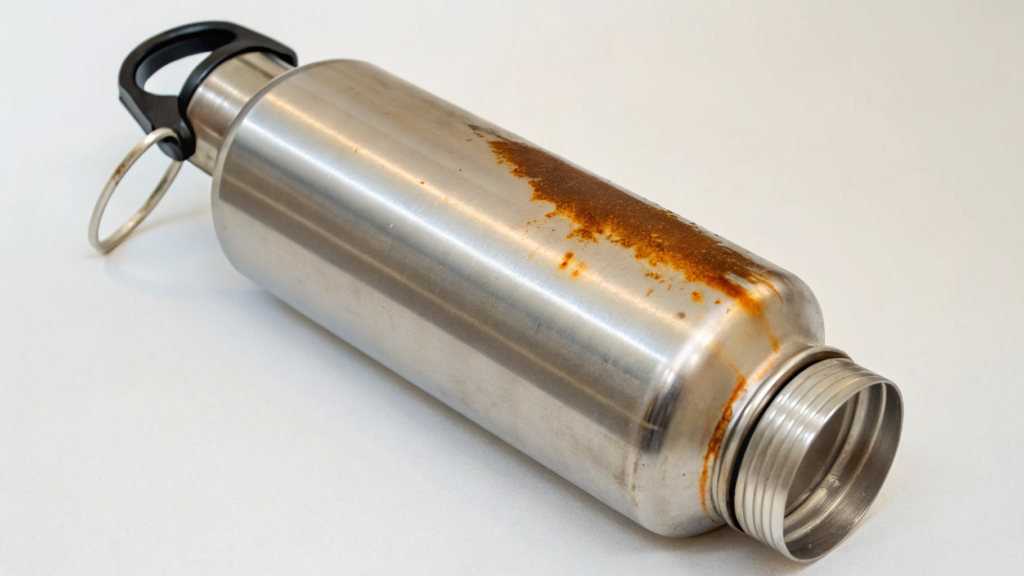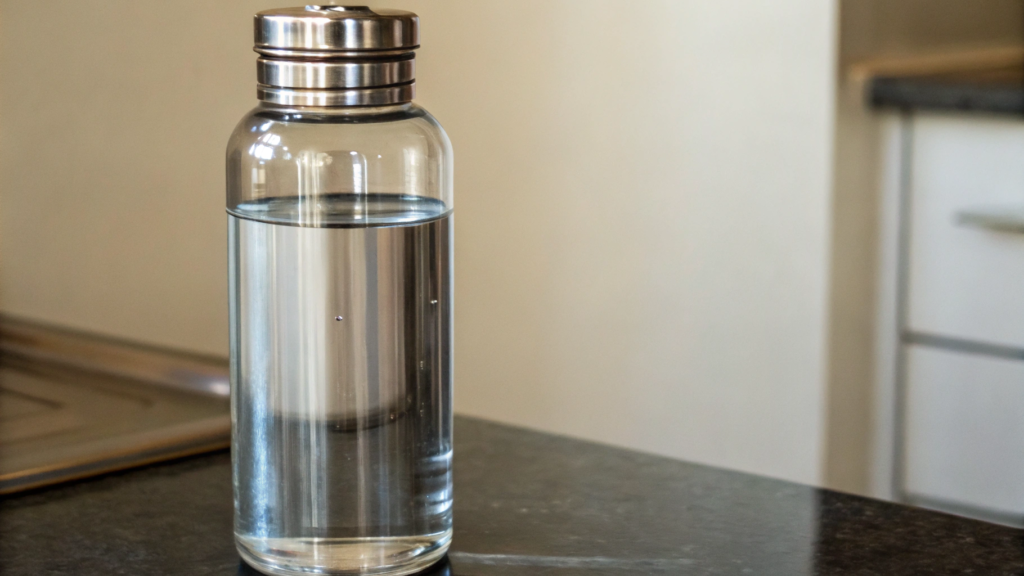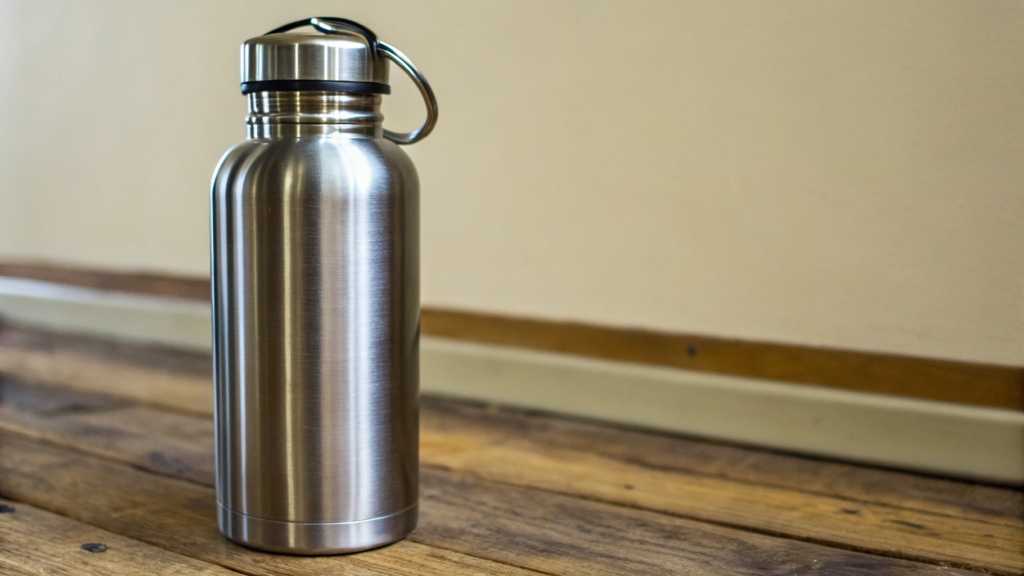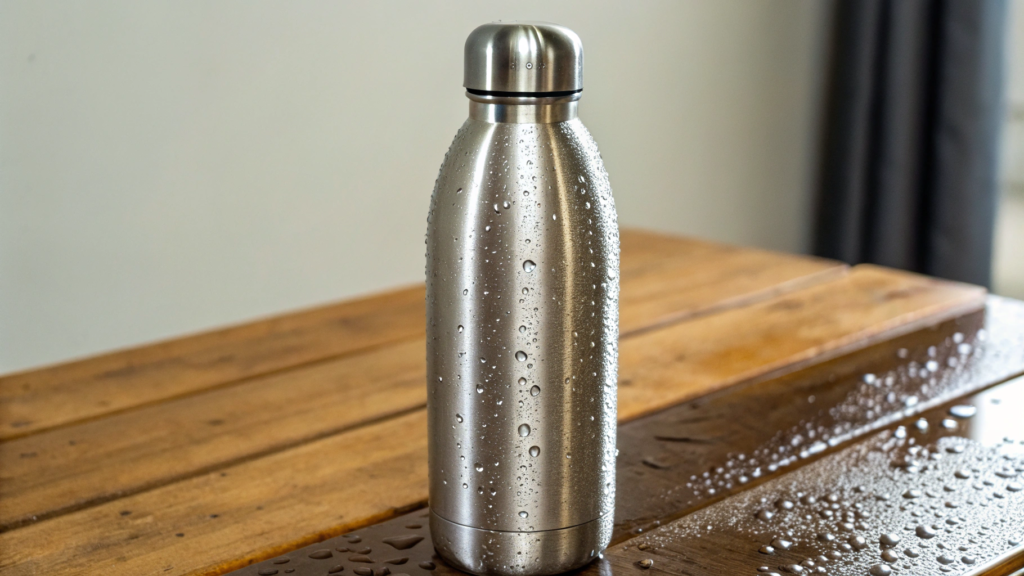Do stainless steel water bottles rust?
Many people think "stainless steel" means "never rusts." But from my experience, that's not quite true. It's a bit more complex than that.
While stainless steel water bottles are highly resistant to rust, they are not entirely rust-proof. Rust can form if the protective layer on the steel is damaged, or if the bottle is made from a lower quality of stainless steel. Proper care is key to preventing corrosion.

When I started Latitude Experience, I learned that quality and care matter for everything, even for a simple water bottle. It's about understanding the material.
How long does water stay good in a stainless steel bottle?
Do you ever wonder if water goes bad in your stainless steel bottle? It's a common question, especially if you leave water in it for a while.
Water generally stays good in a stainless steel bottle for about 24 to 48 hours if the bottle is clean and stored at room temperature. For optimal freshness and taste, it's best to drink the water within a day and clean your bottle regularly.

From my perspective, how long water stays good depends more on the water's quality and the bottle's cleanliness than the bottle itself. A clean bottle helps keep water fresh.
What impacts how long water stays fresh in your bottle?
When thinking about water freshness in a stainless steel bottle1, several things play a role. I often remind people that the bottle itself doesn't make water go bad, but it can affect how fresh it tastes. The initial quality of the water is important. If you fill it with filtered water, it will likely stay fresh longer than tap water with high mineral content. Temperature also matters; warmer water can encourage bacterial growth more quickly than cold water. Lastly, the cleanliness of the bottle is key. If the bottle isn't washed well, bacteria can build up and affect the water's taste and safety.
| Factor | Impact on Water Freshness | Recommendation |
|---|---|---|
| Initial Water Quality | Water with fewer impurities or pre-filtered water lasts longer. | Use filtered or purified water if possible. |
| Temperature | Warmer temperatures can accelerate bacterial growth. | Store your bottle in a cool place, or use an insulated bottle. |
| Bottle Cleanliness | Residual bacteria from previous use can contaminate fresh water. | Wash your bottle daily with soap and water, especially the lid. |
| Exposure to Air | Frequent opening allows airborne bacteria to enter. | Keep the lid closed when not drinking. |
| Additives (e.g., fruit) | Fruit or flavorings can speed up spoilage. | Clean thoroughly after adding anything other than plain water. |
I once had a client who complained their water tasted odd after a few hours in their bottle. I asked them about their cleaning habits. It turned out they rarely washed the lid. Once they started cleaning it daily, the problem went away. This showed me that simple steps, like good cleaning, make a big difference in how long your water stays good and safe to drink.
Is it healthy to drink water from a stainless steel bottle?
Are you concerned about drinking from a stainless steel bottle? Many people ask me if it's truly a healthy choice. I can tell you what I've learned.
Yes, it is very healthy to drink water from a high-quality stainless steel bottle. Food-grade stainless steel, like 18/8 or 304, is non-toxic, doesn't leach chemicals into your water, and resists bacterial growth, making it a safe and durable option.

From my background, I've seen many materials used for containers. Stainless steel stands out because of its safety. It's a material I trust for daily use.
Why is stainless steel a healthy choice for water bottles?
When I discuss water bottles, I always highlight the health benefits of stainless steel. It is one of the safest materials for carrying drinks. First, stainless steel is non-toxic. Unlike some plastics, it does not contain harmful chemicals like BPA or phthalates that can leach into your water. Second, it is non-reactive. This means it will not change the taste of your water, even if you put acidic drinks in it. Third, its smooth surface resists bacteria. This makes it easy to clean and keeps germs from growing. These features make it a very good choice for your health.
| Health Benefit | Explanation | Practical Impact |
|---|---|---|
| Chemical-Free | Does not contain BPA, phthalates, or other potentially harmful plastics. | No risk of chemicals leaching into your drinking water. |
| Non-Reactive | Does not interact with contents, even acidic drinks. | Your water tastes pure; no metallic or strange flavors. |
| Resists Bacteria | Smooth, non-porous surface is easy to clean and discourages growth. | Promotes better hygiene and reduces the risk of contamination. |
| Durable | Withstands drops and daily wear without breaking or degrading. | Long-lasting and reliable, reducing need for frequent replacement. |
| Temperature Retention | Insulated bottles keep water cold (or hot) for extended periods. | Encourages hydration by keeping water at a desirable temperature. |
I once helped a school select water bottles for their students. They were very concerned about safety. We chose 18/8 food-grade stainless steel2 bottles because they are known for their safety and durability. The parents and teachers were happy with the choice. It confirmed that stainless steel is a trusted material for health-conscious users. It's a simple way to make a healthier choice every day.
How long does it take for stainless steel to rust in water?
Do you worry about your stainless steel bottle getting rusty, especially if it's often wet? It's a fair question, as "stainless" doesn't mean "never stains."
High-quality stainless steel, like 18/8 or 304 food-grade, is highly resistant and can take a very long time, often many years, to show any signs of rust even with regular water exposure. However, prolonged exposure to harsh chemicals3, salt water, or scratches can accelerate corrosion.

In my line of work, I've seen that the quality of the steel and how you treat it are the biggest factors. A good bottle, well cared for, lasts a very long time without rust.
What makes stainless steel rust, and how can you stop it?
Stainless steel's "stainless" quality comes from a thin, clear layer of chromium oxide on its surface. This layer protects the steel from rust. But this layer can break down. This is when rust can start. I've found a few common reasons this happens. Scratches can break the layer. Exposure to harsh chemicals, like bleach or strong acids, can also damage it. Salt water is also very bad for stainless steel. Not drying the bottle properly, especially around the lid or in crevices, can also lead to rust spots over time. Using lower-grade stainless steel also makes it rust faster.
| Cause of Rust | Explanation | Prevention Tip |
|---|---|---|
| Damaged Protective Layer | Scratches or abrasion can remove the chromium oxide layer. | Use soft brushes for cleaning; avoid abrasive scrubbers. |
| Exposure to Chlorides | Salt water, some tap water chemicals, or cleaning agents. | Avoid leaving salt water in the bottle; rinse thoroughly after use. |
| Acidic Residues | Leaving acidic drinks (e.g., lemon juice) for long periods. | Rinse immediately after using with acidic beverages. |
| Poor Quality Steel | Using lower grades (e.g., 201 series) instead of food-grade 18/8 or 304. | Always choose bottles made from 18/8 or 304 stainless steel. |
| Lack of Drying | Water trapped in crevices allows rust to form over time. | Always dry your bottle completely after washing, especially the lid and seals. |
| Iron Contamination | Contact with rusty metals or iron particles. | Store bottles separately from other metals that might rust. |
I once had a customer whose stainless steel bottle developed small rust spots after a year. We found out they often left salty sports drinks in it overnight. Once they started rinsing and drying it thoroughly after each use, especially after sports drinks, the problem stopped. This showed me that even the best stainless steel needs simple care to prevent rust and last a lifetime.
Conclusion
Stainless steel bottles can rust if not cared for, especially with scratches or salt. Water stays good for about a day or two. Drinking from them is healthy.
-
Explore the advantages of stainless steel bottles, including durability and health benefits, to make an informed choice. ↩
-
Explore the importance of food-grade stainless steel for safe drinking and durability. ↩
-
Find out which chemicals can damage stainless steel to prolong the life of your bottle. ↩





